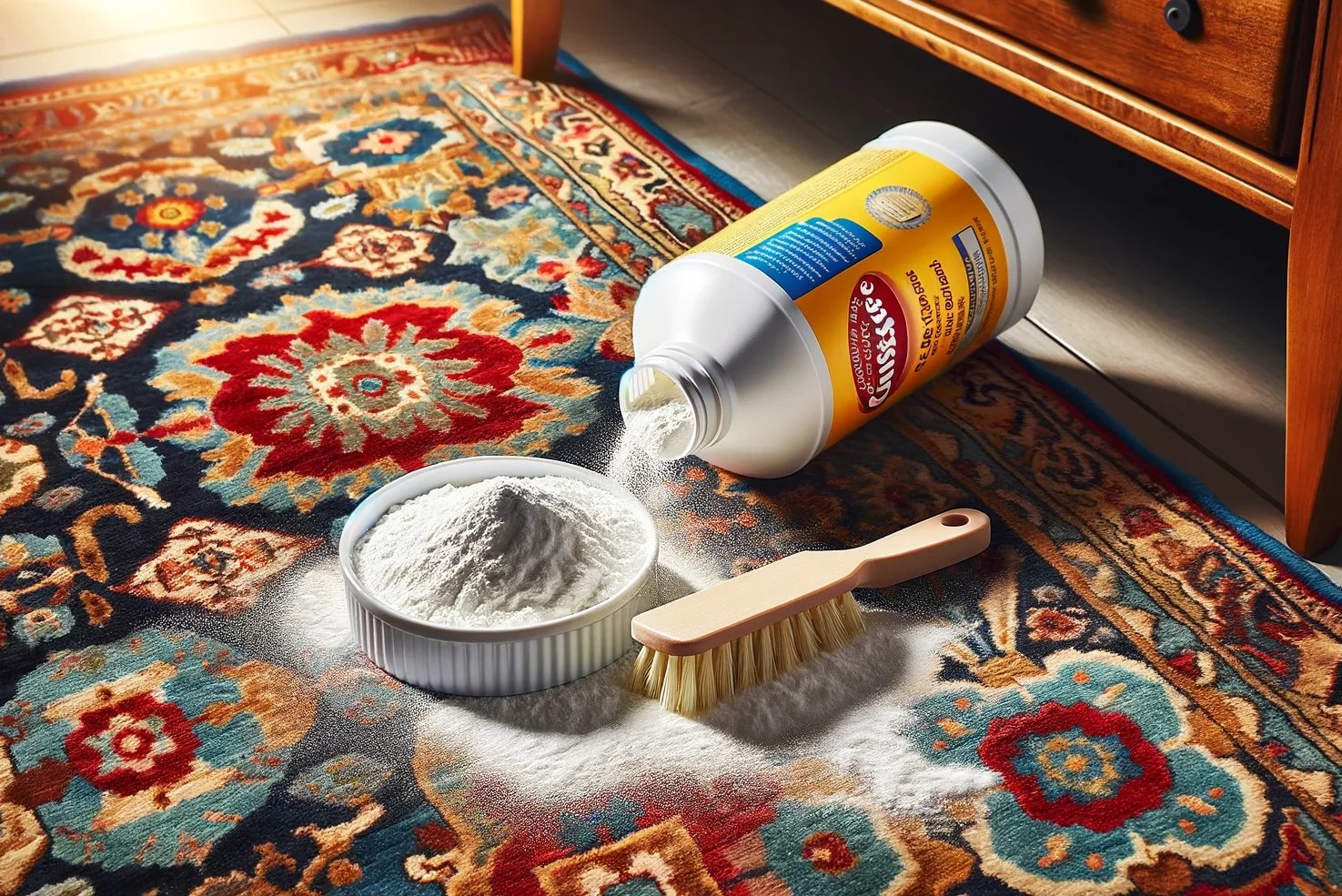Expert Persian Rugs Buying Guides
When embarking on the quest for a new carpet, whether it's for a specific room in your house or a special piece such as a Persian or Oriental rug, the myriad options and considerations can seem daunting.
This guide and linked sections aim to be your comprehensive navigational tool through the sea of choices, ensuring you make a well-informed decision that matches your aesthetic desires, practical requirements, and budgetary constraints.
Related guides:
Key Factors to Consider When Buying Persian Rugs
1. Understanding Carpet Basics
Beginning your carpet selection process involves getting to grips with the fundamentals: materials, durability, and style. Carpets are crafted from a variety of fibres, each presenting unique benefits.
- Wool stands out for its softness and long-lasting nature, offering both warmth and resilience.
- Synthetic fibres, including nylon and polyester, are known for their affordability, stain resistance, and straightforward maintenance, making them ideal for busy areas.
The longevity of a carpet, influenced by its make and fibre type, is crucial, particularly in high-traffic zones such as hallways and living rooms.
The carpet's style, spanning its colour, pattern, and texture, should ideally complement your home's interior design, mirroring your personal taste and elevating the space's overall charm.
Use all the sections of this site to learn more about the styles, the types of rugs, their history, decor ideas etc and have a better idea of the variety and quality of the oriental rugs to be able to make an informed decision.
In 2024, as you consider adding a Persian or Oriental rug to your home, embrace the journey with enthusiasm. Armed with the knowledge from this website and insights from seasoned experts like Joe Rugs (myself), you're well-equipped to choose a carpet that not only enhances your space but also brings joy and beauty into your everyday life.
2. Choosing the Perfect Carpet for Different Living Spaces
Explore the below sections to get more inspiration and choose the right carpet for your room.
Living Room
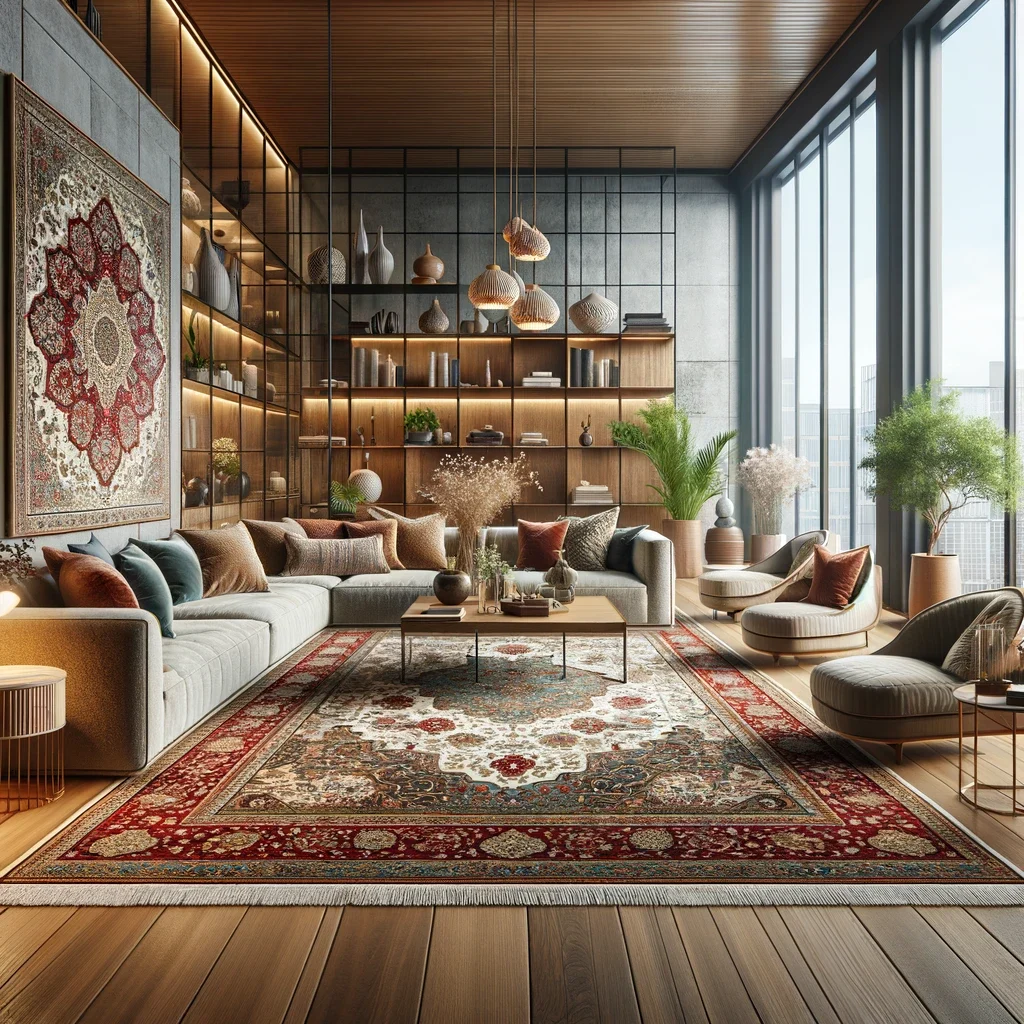
Bedroom
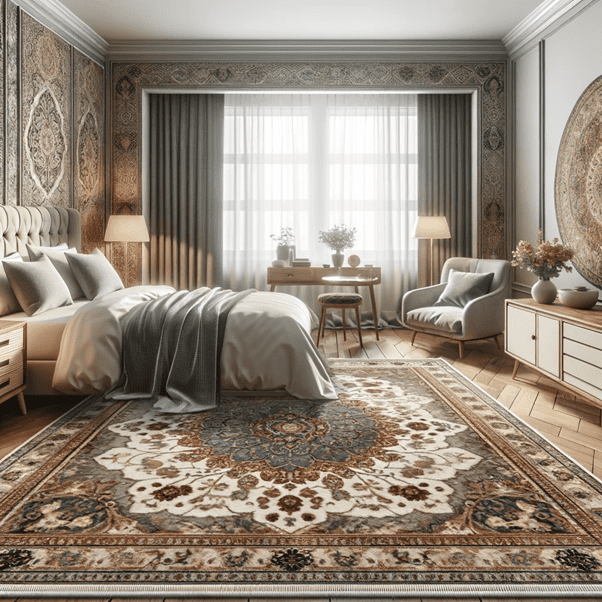
Lounge
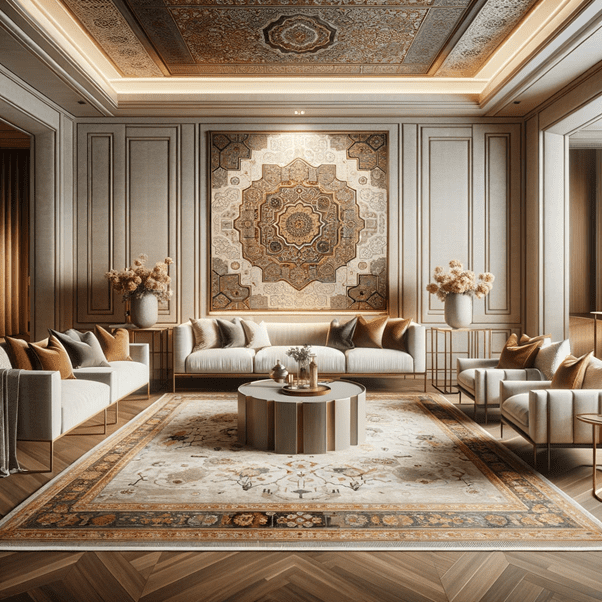
Hallway
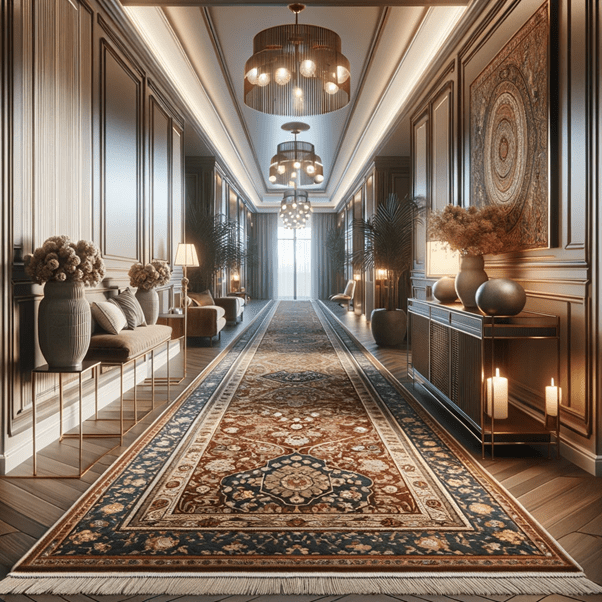
Stairs
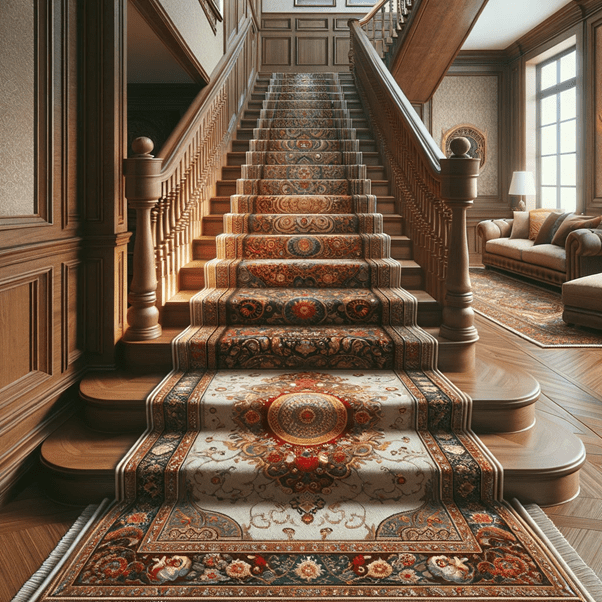
Car Mats
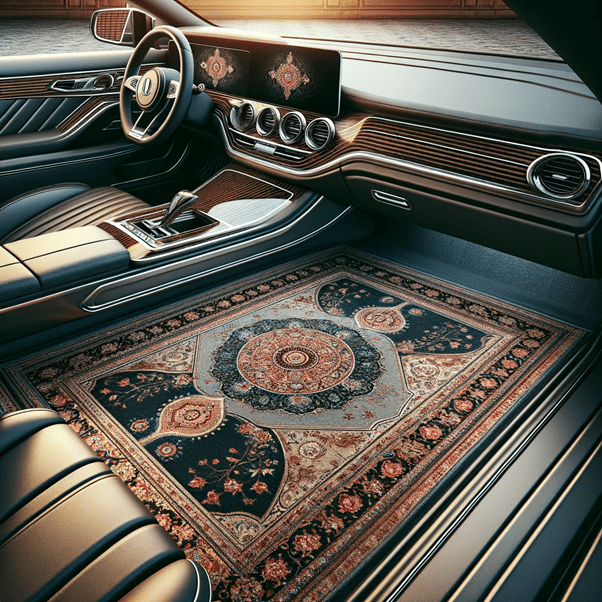
Kitchen
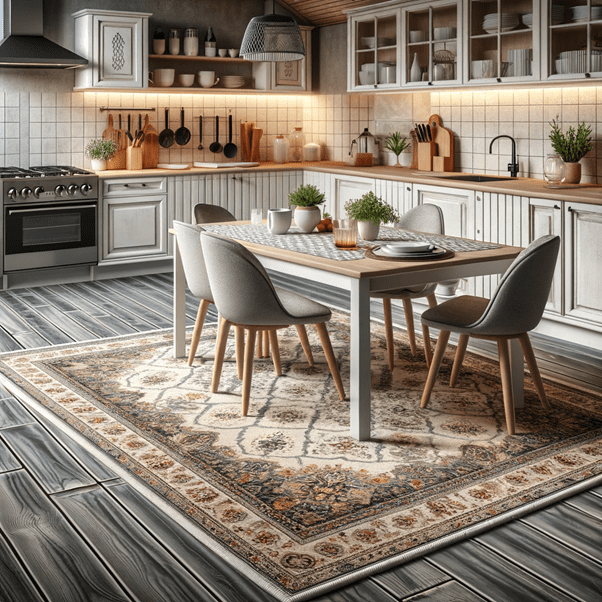
Bathroom
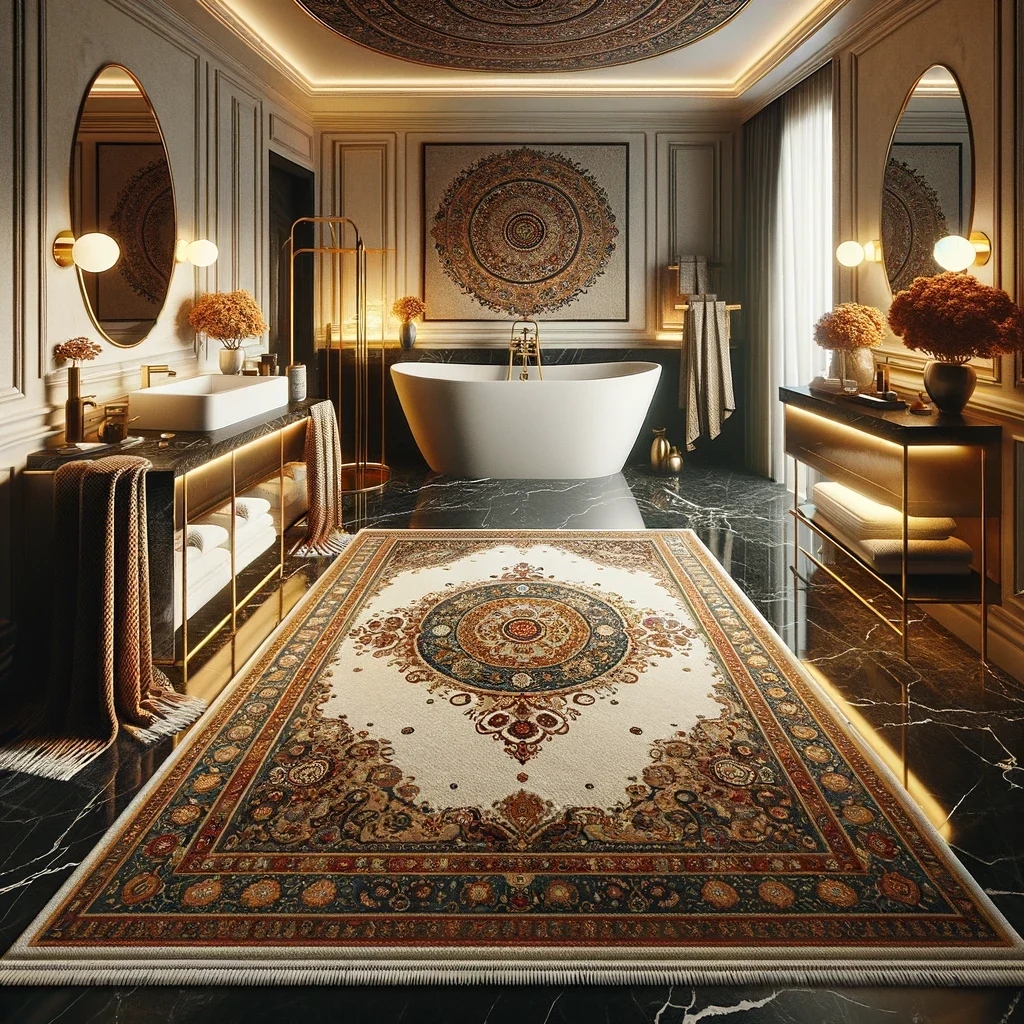
Selecting the right rug size and ensuring its quality are pivotal decisions that have a profound impact on both the aesthetics and the functional aspects of your living space.
Mastering Rug Size Selection
For Living Rooms: The size of the rug in a living room should be based on the seating arrangement. A common approach is to choose a rug that is large enough for all furniture to sit on it, or at least have the front legs of the sofas and chairs on the rug. This unifies the furniture and creates a cohesive look. Alternatively, smaller rugs can be used to define specific areas within the room, such as under a coffee table, to create distinct zones.
For Bedrooms: In a bedroom, a rug should extend at least 18 to 24 inches beyond the sides of the bed, providing a warm and soft landing in the morning. In larger bedrooms, consider a rug that encompasses the bed and any bedside furniture. Smaller rugs or runners placed on either side of the bed are a good alternative for tighter spaces or to highlight the bed as the focal point.
For Dining Rooms: The dining room rug should be large enough for chairs to remain on the rug when pulled out from the table. Typically, this means the rug should extend at least 24 inches beyond the table on all sides, ensuring chairs stay on the rug even when occupied.
3. Deciphering Rug Quality
By understanding the quality key factors, you can make a more informed choice when selecting a rug. Whether you're investing in a luxurious Persian rug for your living room or a durable synthetic mat for a high-traffic hallway, it's very important you take the time to consider all factors to enhance the enjoyment and longevity of your purchase.
Fibre Type: The material of a rug plays a significant role in its quality, appearance, and feel.
- Natural fibres like wool, silk, and cotton are known for their durability, luxury, and ease of care.
- Wool rugs, in particular, are resilient to foot traffic and provide a soft, plush feel underfoot.
- Synthetic fibres, such as nylon and polyester, offer practical benefits like stain resistance and affordability, making them suitable for areas with high traffic or potential spills.
Density and Pile Height: The density of a rug, indicated by the closeness of its fibres, and the pile height contribute to its overall quality and feel.
- A higher density rug is typically more durable and comfortable, while the pile height affects the rug's look and maintenance requirements.
- Low-pile rugs are easier to clean and maintain, making them ideal for high-traffic areas, whereas high-pile or shag rugs add a luxurious feel to more intimate spaces.
Construction Method: The way a rug is constructed affects its quality and price.
- Hand-knotted rugs are considered the gold standard, known for their durability, intricate designs, and craftsmanship.
- Hand-tufted, flat-weave, and machine-made rugs offer a range of qualities and price points suitable for various needs and preferences.
Design and Colour: High-quality rugs feature clear, vibrant designs and colours that are resistant to fading. The clarity of a rug's design, especially in hand-knotted rugs, can indicate the skill level of the artisans and the time invested in its creation.
Joe Rugs - Carpet Expert
Hello! I'm Joseph Rugs, the founder of CarpetJoe.com and your guide through the intricate world of carpets. Born and raised in London with a deep-rooted passion for art and culture, I've explored the globe to bring the rich tapestry of carpet weaving right to your screen. My academic background in arts and humanities from Oxford has fueled my curiosity, leading me to uncover the stories behind every knot and weave. As a family man, my adventures are shared with my loved ones, enriching our lives with every piece of art we encounter. Join me as we explore the beauty and craftsmanship of carpets together.
4. The Online Shopping Advantage
The digital era has revamped the way we purchase carpets. Online shopping allows you to peruse extensive collections at your leisure, with the added benefits of price comparison, customer reviews, and access to high-resolution images.
Trustworthy online retailers offer comprehensive product descriptions, clear return policies, and dedicated customer support, making your buying journey smooth and hassle-free.
My personal advice is: when shopping online for these precious pieces, always verify the retailer's credibility. Look for stores that offer:
- detailed descriptions,
- high-quality images,
- transparent customer reviews.
And don't shy away from seeking professional advice if you're uncertain about a rug's authenticity or quality.
5. Maintain and Preserve the Quality of your Rug
Maintaining and preserving the quality and look of a Persian rug is important for several compelling reasons. Here are the key reasons why it's crucial to maintain and preserve these exquisite pieces.
Investment Value
Persian rugs are often considered valuable investments. With proper care, they can last for generations, often increasing in value over time. Preserving their quality and appearance ensures that the investment retains or even appreciates in value, making it a worthwhile asset for future generations.
Aesthetic Appeal
The intricate designs and vibrant colours of Persian rugs add a touch of elegance and warmth to any room. Maintaining their quality ensures that these aesthetic attributes continue to enhance your living space, contributing to a beautiful and inviting home environment.
Cultural and Historical Significance
Persian rugs are rich in cultural and historical significance. Each rug tells a story, reflecting the traditions, lifestyles, and artistry of the region it comes from. Preserving these rugs helps keep these stories alive, allowing owners and observers to appreciate and celebrate the rich cultural heritage they represent.
Durability and Longevity
Proper maintenance ensures that Persian rugs endure the wear and tear of everyday use, maintaining their durability and extending their lifespan. These rugs are designed to be long-lasting, but without appropriate care, they can succumb to damage from traffic, spills, and environmental factors.
Health and Hygiene
Rugs can accumulate dust, allergens, and microorganisms over time, which can affect indoor air quality and potentially pose health risks to inhabitants. Regular cleaning and maintenance of Persian rugs contribute to a healthier living environment by removing these accumulations and ensuring the rug remains clean and hygienic.
Emotional and Sentimental Value
Many Persian rugs are cherished family heirlooms, passed down through generations. They often carry sentimental value and are tied to memories and traditions. Preserving these rugs honours the memory of ancestors and the legacy of the family, allowing the rug to continue being a symbol of family heritage.
Cost Efficiency
Investing in the maintenance of a Persian rug is more cost-effective in the long run than replacing it due to neglect. Proper care prevents premature deterioration, avoiding the need for expensive restoration or replacement.
Preventing Wear and Damage
- Rotation: Rotate your rug every six months to ensure even wear, especially if it's placed in a sunlit area or high-traffic path.
- Avoid Direct Sunlight: Prolonged exposure to sunlight can fade the colours of your rug. Use curtains or blinds to protect the rug during peak sunlight hours.
- Underlay: Using a high-quality underlay can prevent the rug from slipping, provide additional comfort underfoot, and protect the rug from wear.
Explore Carpet Care & Maintenance sections
Carpet Repair & Restoration Guides
Carpet damage can range from minor issues like small burns or stains to more significant problems such as large tears or widespread wear.
Identifying the type of damage is the first step in determining the most suitable repair method.
Master carpet repair with our guides. Learn about fixing burns, holes, and wear in carpets and rugs, including DIY patch repairs and professional restoration tips.
Frequently Asked Questions
Yes, Persian rugs can be highly valuable, especially those that are antique, hand-knotted, and made from high-quality materials. Their value is influenced by factors such as age, condition, craftsmanship, and rarity.
Persian rugs often carry deep symbolic meanings, with motifs representing elements such as life, prosperity, and nature. The designs can be a form of storytelling or a wish for good fortune.
The high cost is attributed to the labor-intensive process of hand-knotting, the quality of the materials (such as wool and silk), and the cultural and historical significance of the designs. The skill and time required to create each rug justify its price.
Look for the quality of craftsmanship (hand-knotted is preferable), the material (wool or silk), the knot count (higher indicates more detail), and the overall design and colour that suit your taste and decor.
Assess the density and uniformity of the knots, the clarity of the design, the quality of the dyes (natural dyes are often a sign of higher quality), and the finish of the rug.
Consulting with an appraiser who specializes in Persian and Oriental rugs is the best way to determine the value. Factors considered include age, origin, craftsmanship, condition, and market demand.
The "best" rug is subjective and depends on personal preferences, the intended use, and the space where the rug will be placed. Consider rugs that are hand-knotted with high-quality materials and designs that resonate with you.
Measure the area where you plan to place the rug, leaving enough space around furniture for balance. For living rooms, a rug should at least accommodate the front legs of the furniture, while in bedrooms, it should extend around the bed.





